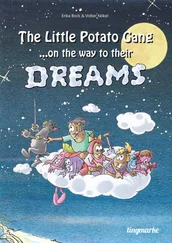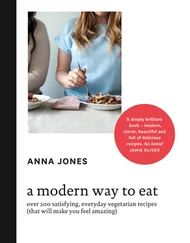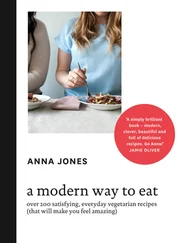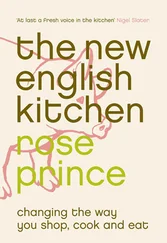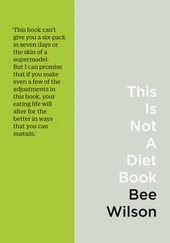If we have lost knowledge about what we are actually eating, we have also lost the old norms regarding how to eat it. Sometimes this looks like freedom; sometimes like chaos. In 1958, survey data suggests, nearly three-quarters of British adults drank hot tea with the evening meal, because this was the expected way to behave. Now, such shared expectations about food have largely vanished. Who can say for certain when ‘lunch time’ is any more? This generation has lived through revolutionary changes not just in what we eat but how we eat it. Our appetites used to be held in place by a series of invisible threads, rituals which told us how to behave when we held a knife and fork. Now, the rituals are mostly gone; and so are the knives and forks.
The nutrient content of our meals is one thing that has radically changed; the psychology of eating is another. Much of our eating takes place in a new chaotic atmosphere in which we no longer have many rules to fall back on. The problem is partly that cooking at home from raw ingredients is no longer the unquestioned daily routine that it once was. One of the functions of traditional cuisines was to create a common understanding of what ingredients could and couldn’t be combined. Sometimes, these rules could feel restrictive and annoying, such as the Italian insistence that fish and cheese can never enhance each other (tell that to the person who has just enjoyed a delicious fish pie with cheddar cheese on top). But at least these culinary rules gave a sense of structure to our eating, whether you obeyed them or not. Now, many of us are eating with no structure to guide us, as the day passes in a blur of bizarre snacks. When I interviewed a product developer for a major UK supermarket in 2017, she said that the main way that British eating behaviour had changed over the past decade was that people had become so erratic and hard to categorise. In a single basket of food, shoppers oscillate wildly between vegan health foods such as oat milk and meat-heavy ‘dude food’ such as pizzas topped with pulled pork.
On an early evening train journey recently, I looked up at my fellow travellers and noticed, first, that almost everyone was eating or drinking and second, that they were all doing so in ways that might once have been considered deeply eccentric. One man had both a cappuccino and a can of fizzy drink from which he was taking alternate sips. A woman with headphones on was nibbling an apricot tart, produced from a cardboard patisserie box. She followed it with a high-protein snackpot of two hard-boiled eggs and some raw spinach. Sitting across from her was a man carrying a worn leather briefcase. He reached inside the case and produced a bottle of strawberry milkshake and a half-finished packet of chocolate-caramel sweets.
Like other modern eaters, these travellers were improvising their own food rules as they went along. The most surprising thing about this scene – which took place between Birmingham and London – is that it could have happened on a train between cities almost anywhere. As I first embarked on this book, my plan was to explore how people eat in very different ways around the world. But as I met people from different countries, I kept being struck that the things they told me about modern eating were, to a weird extent, the same. This is another paradox of our times. Most people can afford to eat a more varied diet than in the past, but our varied diets are varied in the same way. From Mumbai to Cape Town, from Milan to Nanjing, people told me they felt they had lived through huge changes in the way they ate, compared to their parents and certainly compared to their grandparents. They spoke of the erosion of traditional home cooking and the rise of McDonald’s and of eating in front of screens. They also spoke of the backlash against ultra-processed food and the way that certain ‘healthy’ foods (notably quinoa) had become a fetish of late. They spoke of weight-loss diets and the popularity of low-carb regimes. They spoke of feeling pressed for time to cook the things they wished they could cook.
We aspire to better food choices, yet the way we eat now is the product of vast impersonal forces that none of us asked for. The choices we make about food are largely predetermined by what’s available and by the limitations of our busy lives.
It might be possible to eat in a more balanced way, if only we didn’t have to work, or go to school, or save money, or travel by car, bus or train, or shop at a supermarket, or live in a city, or share a meal with children, or look at a screen, or get up early, or stay up late, or walk past a vending machine, or feel depressed, or be on medication, or have a food intolerance, or own an imperfectly stocked fridge. Who knows what wonders we might then eat for breakfast?
It’s now becoming abundantly clear that the way most of us currently eat is not sustainable – either for the planet or for human health. The signs that modern food is unsustainable are all around us, whether you want to measure the problem in soil erosion, in the fact that so many farmers cannot make a living from producing food, or in the rising numbers of children having all their teeth extracted because of their sugary diet. Food is the single greatest user of water as well as one of the greatest drivers of the loss of biodiversity. We cannot carry on eating as we are without causing irreparable harm to ourselves and to the environment. At some point, governments may be forced by climate change to reform food systems to become less wasteful and more in tune with the needs of human health. The hope is – as we’ll see – that some governments and cities are already taking action to create environments in which it is easier to feed ourselves in a way that is both healthy and joyous. In the meantime, many individual consumers have taken matters into their own hands and tried to devise their own strategies for escaping the worst excesses of modern food.
Our culture’s obsessive focus on a perfect physique has blinded us to the bigger question, which is what anyone of any size should eat to avoid being sickened by our unbalanced food supply. No one can eat themselves to perfect health, nor can we ward off death indefinitely, and the attempt to do so can drive a person crazy. Our responses to food are hugely individual. Life is deeply unfair and some people may eat every dark green leafy vegetable going and still get cancer. But even if food cannot cure or forestall every ill, it does not have to be the thing that kills us.
The greatest thing that we have lost from our eating today is a sense of balance, whether it’s the balance of meals across the day or the balance of nutrients on our plate. Some complain that modern nutrition is in a state of terminal confusion and that science knows nothing about what a person should aim to eat for better health. This is not quite true. A series of systematic reviews of the evidence by some of the world’s top nutrition scientists – the kind who are not funded by the sugary drink or bacon industries – have sifted through all the data and found robust causal evidence that regular portions of certain foods do significantly lower a person’s risk of chronic diseases, such as heart disease, diabetes and stroke. 12
It’s the balance and variety of what you eat that matters rather than any one ingredient, but there are certain foods you might want to throw into the mix, depending on your preferences, your beliefs, your digestion and whether you have a food intolerance. These protective foods are all relatively unprocessed and include nuts and seeds; beans and pulses; and fish, the oilier the better (canned sardines are an affordable alternative). Fermented foods such as yoghurt, kefir and kimchi seem to help us in all kinds of ways that we are only starting to understand, from gut health to reductions in the risk of diabetes. There are also numerous benefits to eating foods high in fibre, especially vegetables and fruits and wholegrains. You do not have to fork out for superfoods such as fashionable kale; any vegetables will do, as many different types as possible.
Читать дальше


